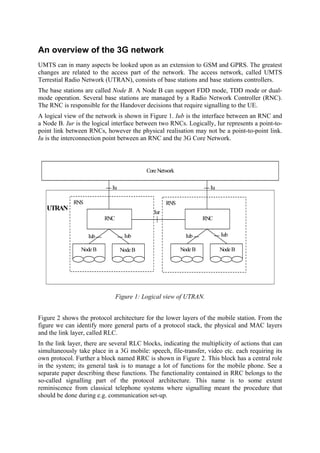1. The 3G network consists of the User Equipment (UE) or mobile phone and the UMTS Terrestrial Radio Access Network (UTRAN) which includes base stations and network intelligence.
2. The UE and UTRAN contain four main layers - physical, MAC, RLC, and RRC layers. The RRC layer handles functions like broadcasting information, establishing connections, and controlling quality of service.
3. Below the RRC layer is the RLC layer, which is focused on data transfer functions like segmentation and reassembly. The MAC layer handles logical channels and prioritization, while the physical layer handles radio functions.



